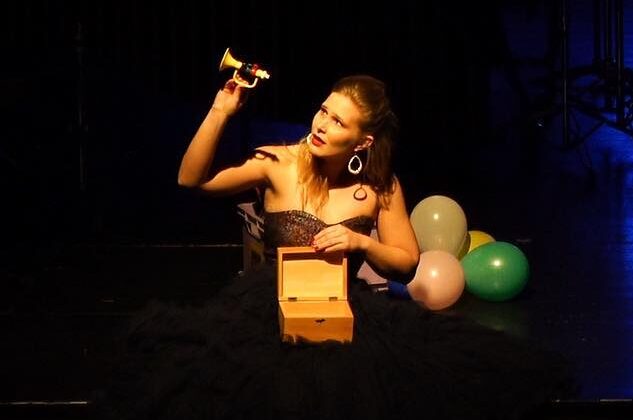
Wunderhorn – song cycle for voice, percussion and tape
duration: ca 60’
newly composed pieces:
recomposed pieces from Gustav Mahler’s Des Knaben Wunderhorn:
- de tamboer for voices and (body) percussion
- de vissenpreek for voices, percussion set-up and tape
- de zangwedstrijd van Koekoek en Nachtegaal for voices and percussion toys
- Himmlisches Leben for voice, percussion set-up and tape
- Urlicht for percussion duo
adaptations of poems from von Arnim and Brentano’s Des Knaben Wunderhorn:
- De Wonderhoorn
- Zomerse Aflossing
written in 2022-23 for duo Goggles with support of Sabam, with texts by von Arnim, Brentano, Goethe and Nietzsche and translations by Maarten Boussery, Ward De Jonghe and Benoît De Leersnyder
first complete performance: 2023-02-05 by Goggles at CC Vredeberg, Lier
finalist at Rhonefestival für Liedkunst #Liedinnovation 2023
“Telling stories is considered one of the most important activities that connect people and stimulate imagination. The unusual and exciting lineup, the theatrical moment, the high musical quality, as well as the multidisciplinarity of the artists with mutual role assignments between narration, singing, percussion convinced the jury.”
– Rhonefestival für Liedkunst
programme note:
view full programme and lyrics (Dutch)
Similar to the work of the Grimm brothers, who collected fairy tales and legends and shaped them to their liking, Des Knaben Wunderhorn came about in the early 19th century. Achim von Arnim and Clemenz Brentano produced two incredibly rich collections of hundreds of old German, folk poems and song lyrics.
Characteristic of this poetry, alongside figures such as the hunter and the miller’s daughter, is, above all, the topic of spring: the forest, the birds, the spring fever, adultery and heartbreak,… Spring was also the season where the first battles took place; therefore, we find soldiers’ songs for marching to the battlefield, about ‘playing the field’, as well as death as a recurring theme. Often the poems are very moralising in Christian tradition.

©Jonas Beerts
In the guise of simple songs and rhymes, the book thus covers the small and big matters of life. After the publication of the Wunderhorn in 1805/1808, the great poet Goethe said that this little book should be found `in every household where cheerful people live, at the window, under the mirror or wherever songbooks and cookery books tend to lie’. He expressed the hope that through the work of Arnim and Brentano the old songs would remain alive, that they would be adapted by subsequent generations and, at best, that they would inspire the creation of new songs.

©Jonas Beerts
Many of the Romantic composers drew on these texts, ranging from Schubert, Mendelssohn and Brahms to Schoenberg. However, the composer we most commonly associate with Des Knaben Wunderhorn is Gustav Mahler. In the 1880s-1890s, he put about 20 of these texts to music and later based his symphonies 2 to 4 on these. Military and nature motifs are indispensable in Mahler’s music, and the Wunderhorn played a crucial role in the development of these.
Goggles took Goethe’s commission one step further and asked me to write a contemporary response to Mahler’s arrangements of these old folk songs. You will hear a selection of Wunderhorn texts and songs, some faithful to Mahler’s score, some completely new. With voice and percussion, they will lead you into the wonderful world of these old, beautiful songs, which seem to be made for eternity.

©Jonas Beerts